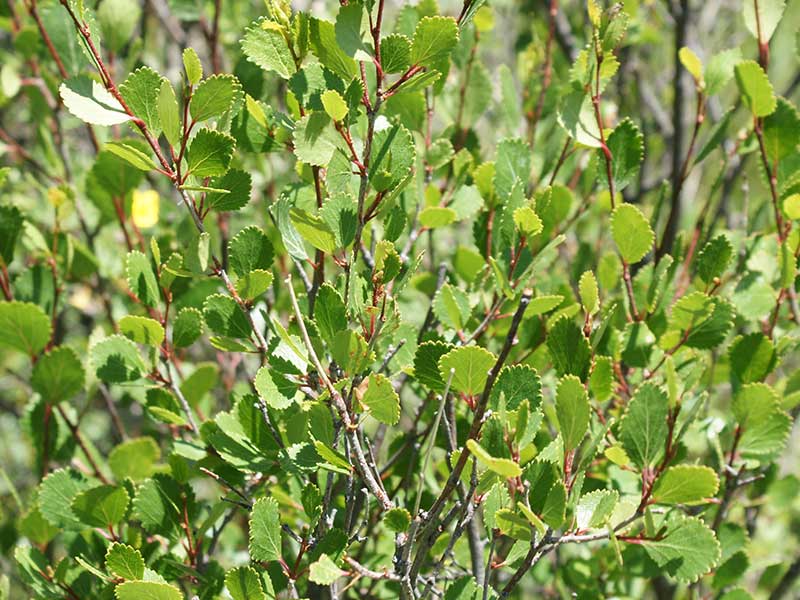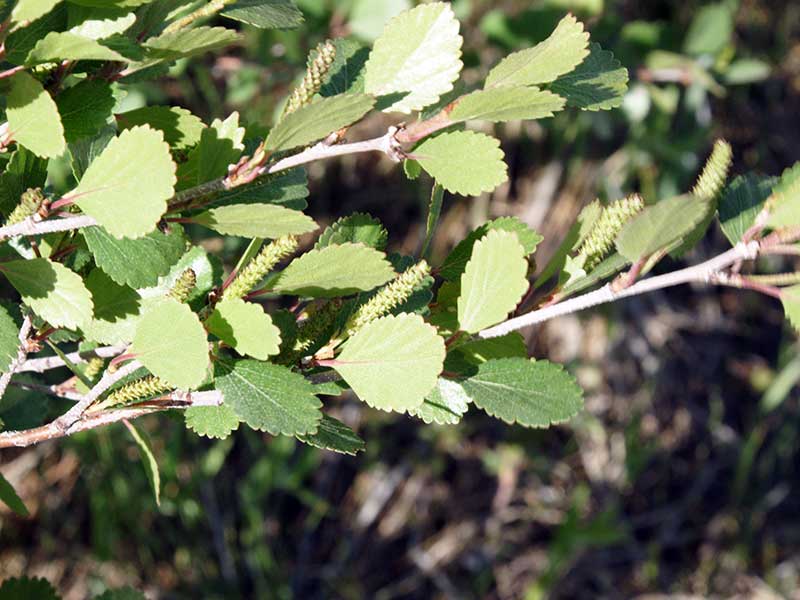Betula pumila / bog birch
- limited to bogs/fens/swamps and wetlands
- shrub to about 6 feet tall
- reddish bark on twigs
- leaves rounded-fan shaped, ca. 1 inch; coarsely toothed
- inflorescences – catkins (cone-like); separate male and female
Also known as: swamp birch, dwarf birch, low birch
Bog birch is a medium-sized, short-lived, clump-forming shrub. It is typically a maximum of 6 to 8 foot tall, but can be highly variable in leaf characters and height. It is known to hybridize with other birches, but in general, anything that looks like it but is over 12 feet and is more of a tree than of shrub form is likely a hybrid. To make matters more complicated, all the common names for B. pumila are also applied to other species.
As the name suggests, bog birch is found in very wet places… bogs, calcareous fens (i.e. our wetlands), wooded swamps, and lake/pond shores. It has very high moisture needs so you will really only find it when you are wearing your wellies or waders.
Bog birch has smooth dark reddish brown bark. The leaves are alternate on spur-like later twigs. On new shoots they appear singly but on the twigs, in groups of twos or threes. The blades are rounded-fan shaped, widest above the middle. They are only ¾ to 1½ inch long, and ½ to 1 inch wide. The edges of the leaves have course teeth, usually rounded but sometimes sharp.
Male and female flowers of the bog birch are borne separately on the same plant, i.e. the species is monoecious. The inflorescence is a catkin, like other members of the birch family. Catkins look like cones, but are shorter and not on conifers. Just look at the photos. Male catkins occur singly on 1 year old twigs and are less than an inch long. They develop in the summer or fall and open in the spring. Female catkins are shorter (less than ¾ inch long )and look more like teeny pine cones. Alas, the photos in the gallery show only the male catkins.


